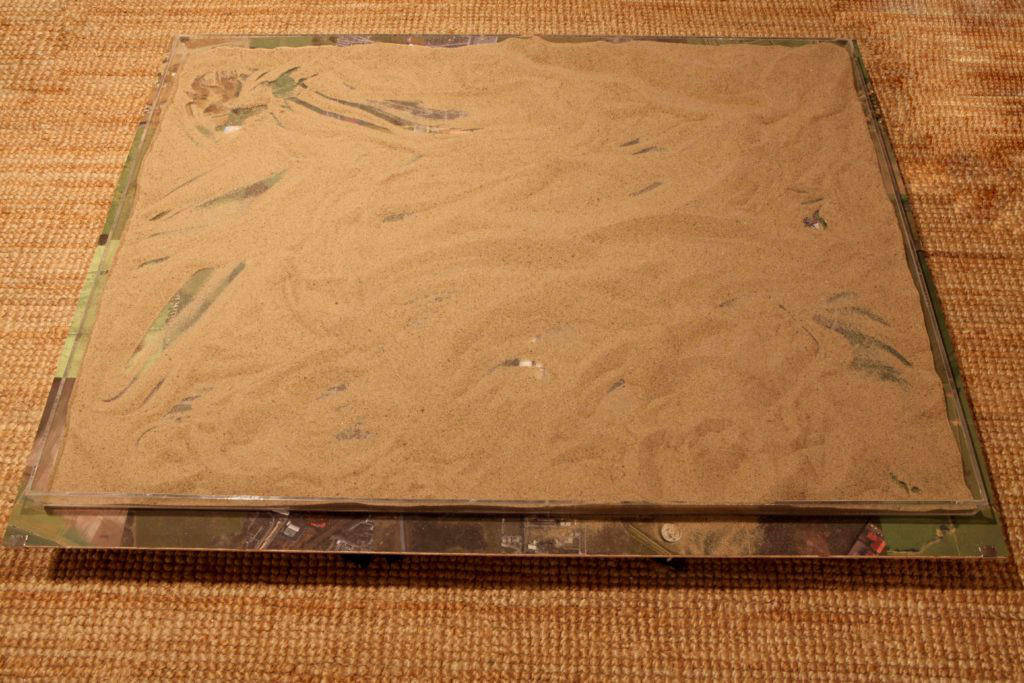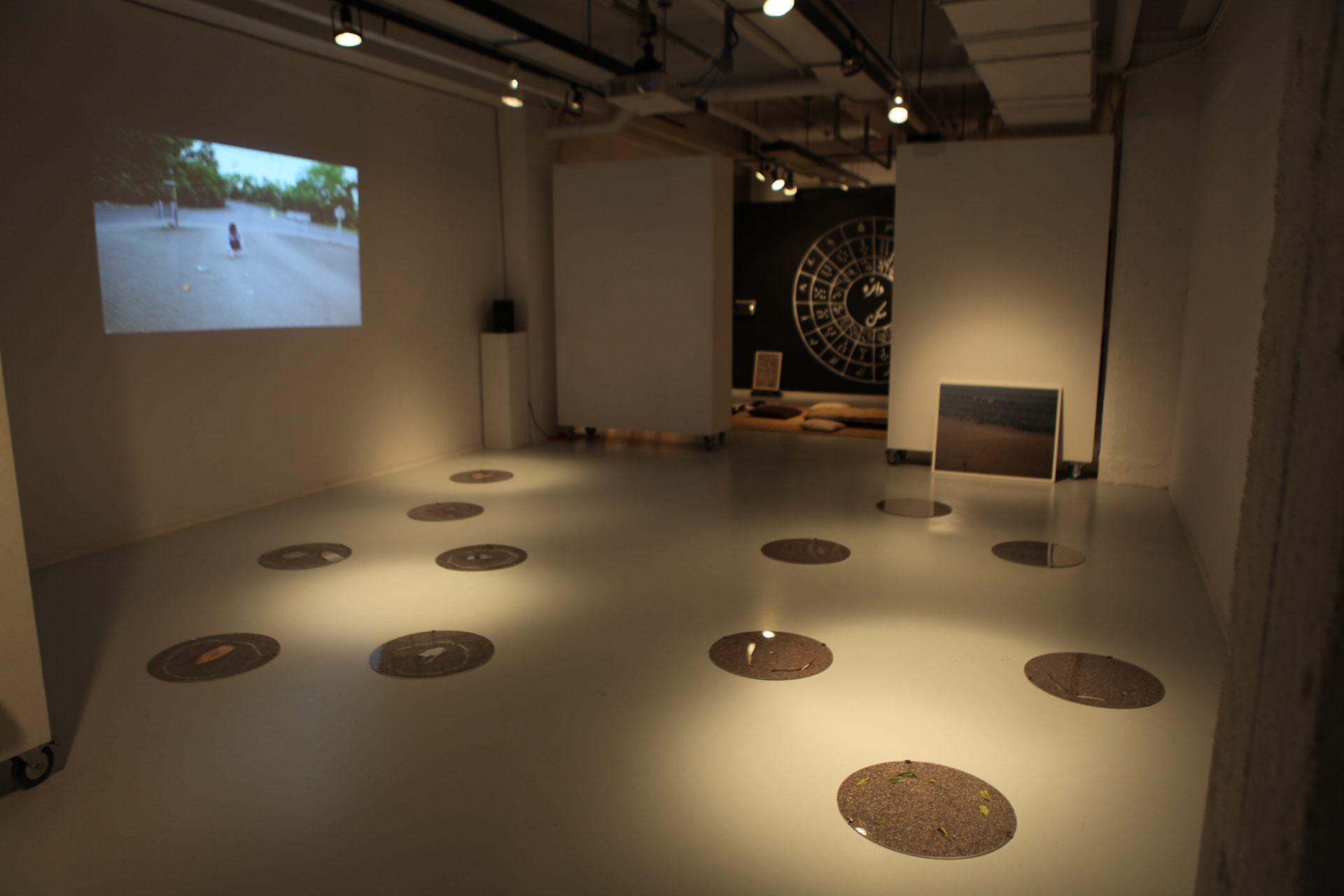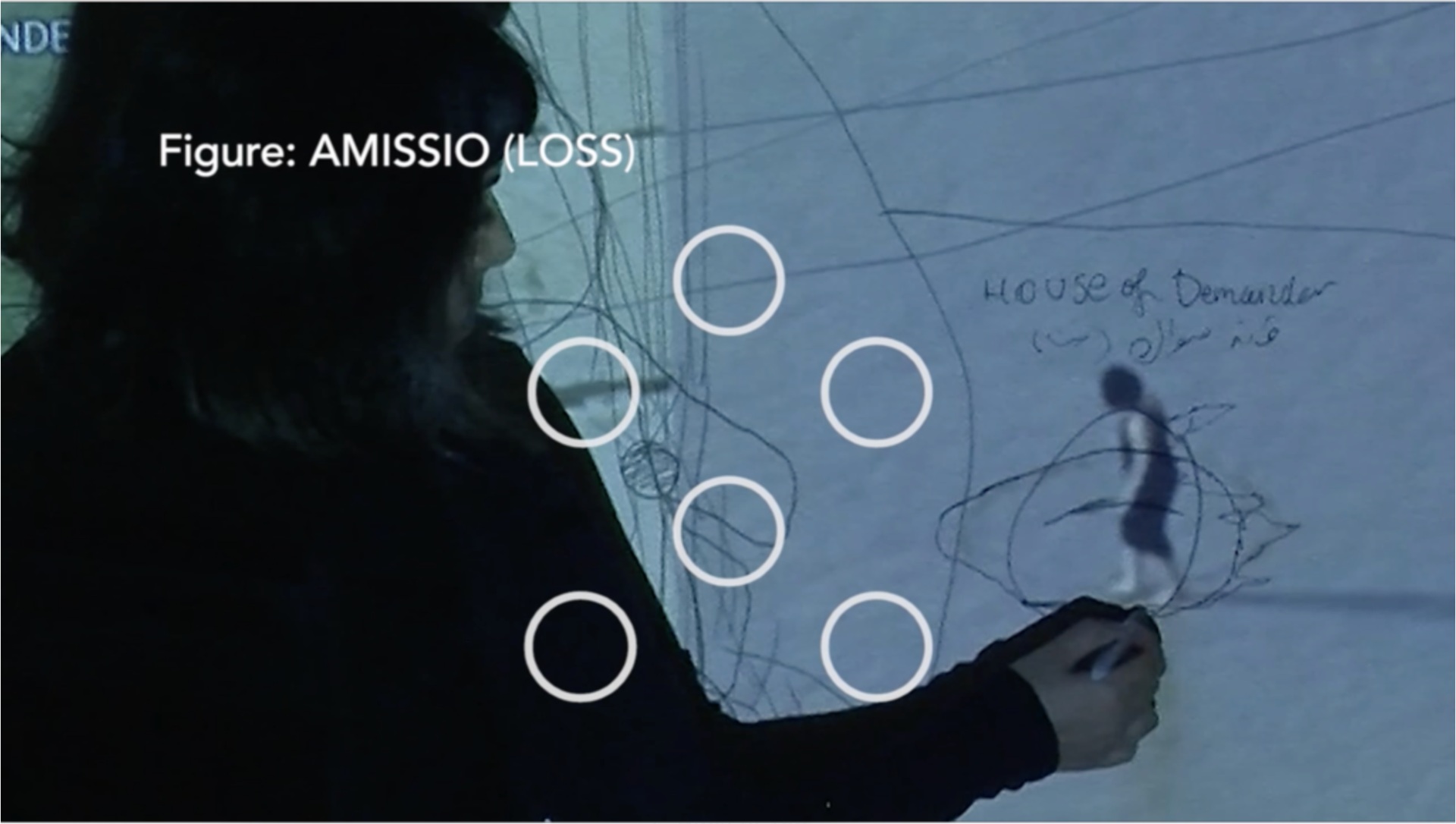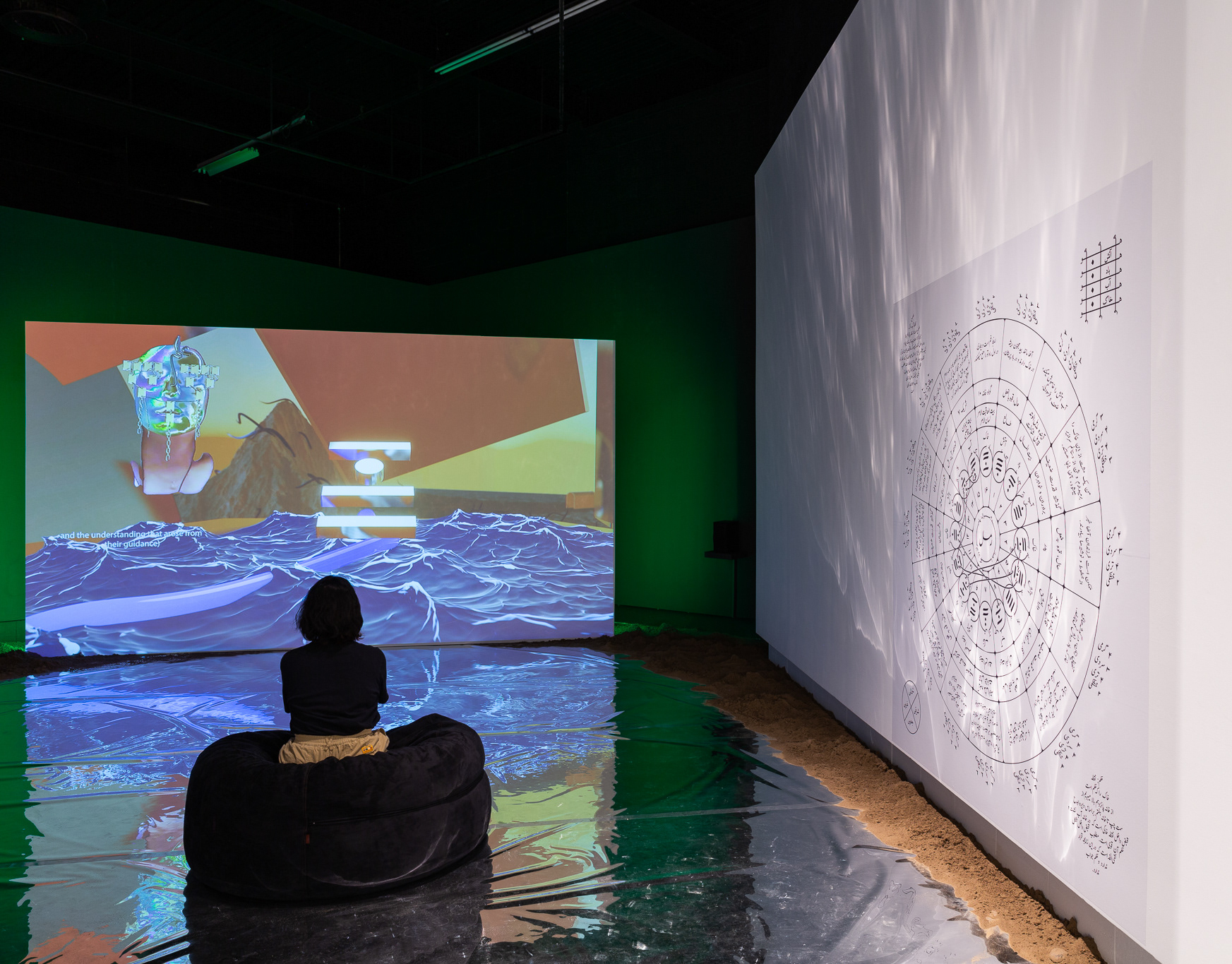Shirin Fahimi, 2017
Tarigh-o-Shekl (The Study of Path and Form)
Taragh is a sound of stamping one’s foot on the ground.
Taragh Taragh Taragh Taragh Taragh Taragh
With its repetition, Tarigh (path) is created.
Taragh
Taragh
Taragh
Taragh
The constant event of “the ground being trodden upon”
Taragh
Taragh Taragh
Taragh Taragh
Taragh Taragh
Taragh
The agreement of these paths take shape as a form;
leads to the apparition of Shekl
Within borders space is perceived as a given, for the subject that orients itself towards its destiny. Falling out of its time, the subject, becomes disoriented, out of form (shekl). This is when the agency of subject comes into play in order to reorient the existing forms and crossing the borders.
The term geomancy, which is a translation of the Arabic ilm al-raml (science of the sand), refers to the foresight that the Earth holds with itself. Through its practice, this foresight is revealed; geomancy interprets the markings on the ground. This ground,
however, is historical and it can be extended to other forms of mediation: from paper to the screen.
This project will study the formation of tarigh (path/borders) and shekl (form/subject) and its interpretation by juxtaposing geographical and geomantic lines in order to create untimely space where the two breach into one another.
Geomancy is used as a method to relocate oneself on the map through finding geomantic pattern intuitively, and creating paths and forms that can speak of invisible narratives and alternative possibilities.
Within Islamic cultures Sihr (magic/wondrous) and divination become an invocations of God or illicit powers such as demons and jinns, in order to facilitate the human agency in the cosmic course of events.
While lines in diagrams are attempting to map out conceptual territories, in Sihr (magic) such as talisman making, they seek to alter and manipulate natural order; which becomes a material disorientation in the cosmos.Geomancy, as a form of divinatory apparatus, actively involves the subject with her past, present and future and It unfolds not just as a search for knowledge but as a source of transformation, empowerment and hope.
Thus, Tarigh-o-Shekl will use geomancy as a method to performatively re-map the city with all of its existing spaces and routes.This would be possible by disclosing the interplay between geomantic combinations (shekl and tarigh) where they overlap and transfix one another.


























